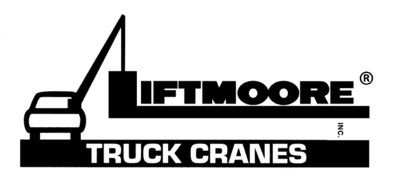Troubleshooting Electric Hoist
Series Wound, Contactor Controlled
Important Note!
The importance of first physically checking every connection between the battery and the crane cannot be overstressed!
Poor connections or poor grounding account for a large percentage of hoist problems. Time is often wasted chasing other probable causes only to eventually find a loose or corroded connection. Measuring the voltage at rest is not sufficient. Often a poor connection will allow enough amperage to operate a meter or test light, but not enough to operate the hoist, which requires very high amperage. Voltage must be measured while a load (application of Function) is applied.
If the problem is random and intermittent then it is almost assuredly a loose or bad connection.
Another common problem is low battery voltage. Even if the battery is good when troubleshooting begins, running the winch can quickly drain a battery. If it can be done safely, it is best to have the vehicle running.
Also check the control socket and plug for bent, corroded, or dirty pins.
Caution!
As the motor approaches stall, due to low voltage or excessive load, a very rapid heat build up occurs which will quickly damage the motor. If the motor is not turning, do not operate the switch for more than a second. Allow the motor to cool between attempts to make it run.
Caution!
DO NOT attempt to run if there is no load on the MOTOR, such as when the motor is removed from the hoist. Motor over-speed will result, which will damage the motor.
Hoist operates in only one direction
If the hoist only operates in one direction then the problem is not the motor. Swap the control wires on the contactor. Activating the pendant switch in the working direction should now operate the hoist in the previous non-working direction.
Example: If hoist up is not working, after swapping the control wires activating the hoist down switch should cause the hoist to go up.
If it does then the hoist and contactor are working correctly and the problem is in the pendant or crane wiring. If it does not then the problem is the contactor or brake.
If the motor tries to turn but stalls then the problem is most likely the brake.
If the control wires were swapped in the previous step, return them to their original positions. Swap the motor field wires labeled F1 and F2. It is usually easiest to swap them at the motor.
Activating the pendant switch in the working direction should now operate the hoist in the previous non-working direction.
Example: If hoist up is not working, after swapping the motor wires activating the hoist down switch should cause the hoist to go up.
If it does, then one side of the contactor is not working and it needs to be replaced.
If it does not work, the problem is a brake malfunction. Inspect the brake installation. Correct any problems found. The brake cannot be repaired. Replace if any damage is found.
Hoist does not run in either direction
If the hoist does not run in either direction then the problem is either lack of power to the control socket or pendant, lack of sufficient power to the motor, the contactor dynamic braking coil, or hoist brake malfunction.
If any other function works or if the contactor clicks when the switch is activated then the control socket is getting power.
If all power connections have not been checked, do so now. Also ensure that the battery still has sufficient power. As a rule of thumb, if it has enough power to start the engine, then it is good.
Once sufficient power is ensured, if there is any indication that the motor is trying to turn but stalls the problem is the brake – have it replaced.
If there is no indication that the motor is trying to turn, attempt to run the motor directly. Disconnect the wire from the F2 terminal at the contactor and touch it to the + terminal. If the motor turns, the contactor is malfunctioning and needs to be replaced. If the motor does not turn then it is malfunctioning and needs to be replaced.
Testing the pendant and control wiring
If the problem is narrowed to the control wiring, it is most likely do to a cut or disconnected wire. A visual inspection of the wiring should be made and repairs made as necessary.
Refer to the pendant drawing and schematic for pin function and locations.
If no visual defects are found and if a continuity tester is available, disconnect the pendant and check for continuity between the control socket pin and terminal at the contactor.
Alternately, a piece of wire or metal object may be used to short between the control socket power pin and the socket hoist pin(s). If the hoist operates then the problem is in the pendant.
If not, check for power at the control socket power pin. If there is no power, trace the wiring back, checking each connection until the problem is found. Correct as necessary.
